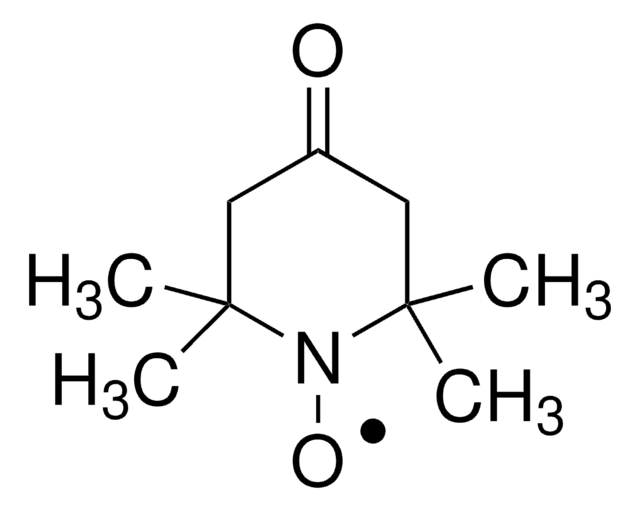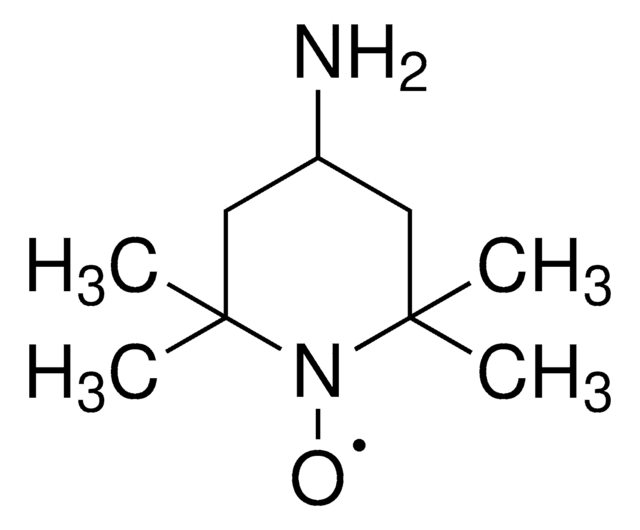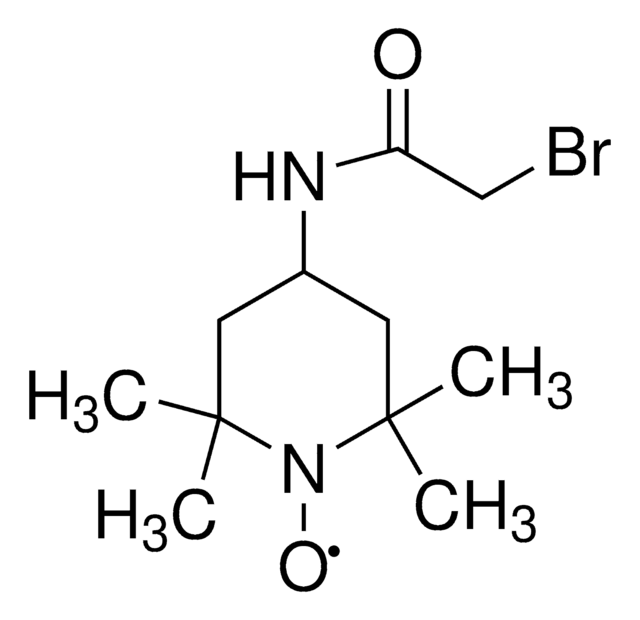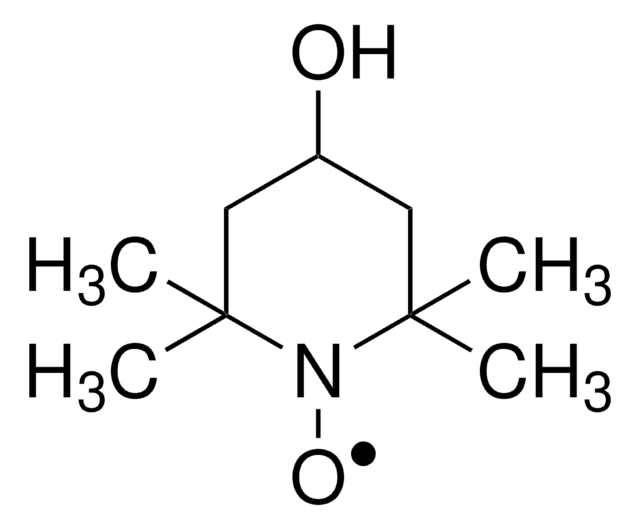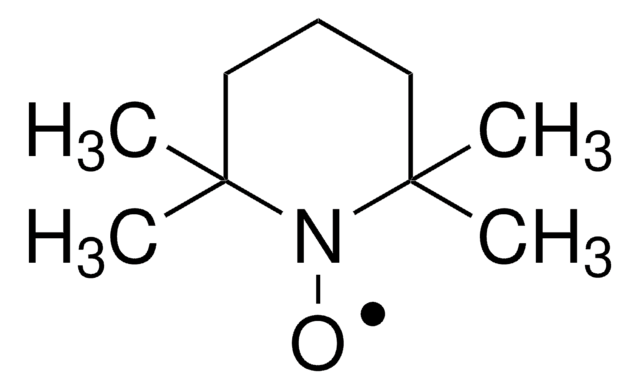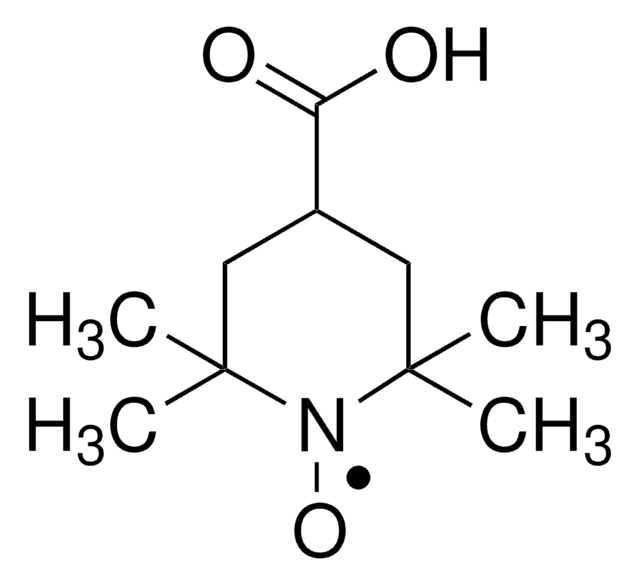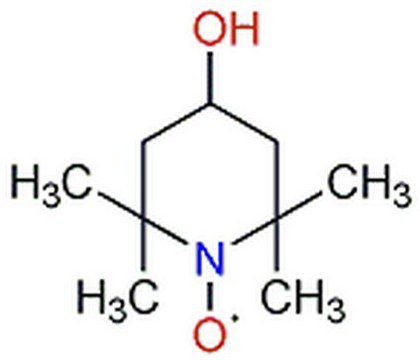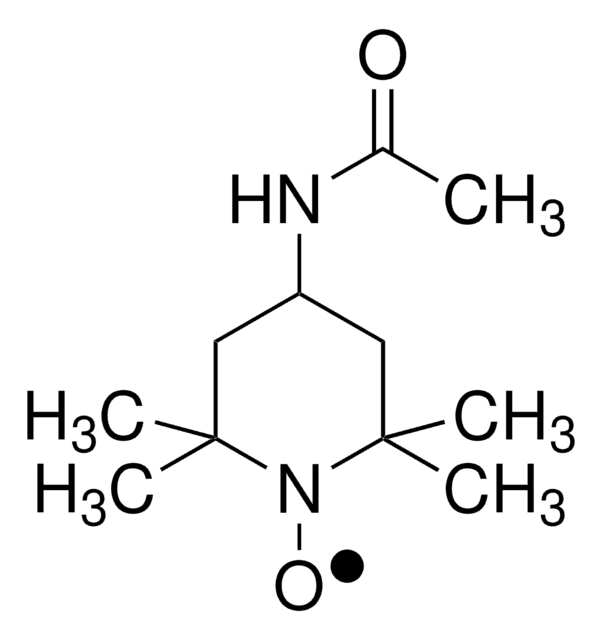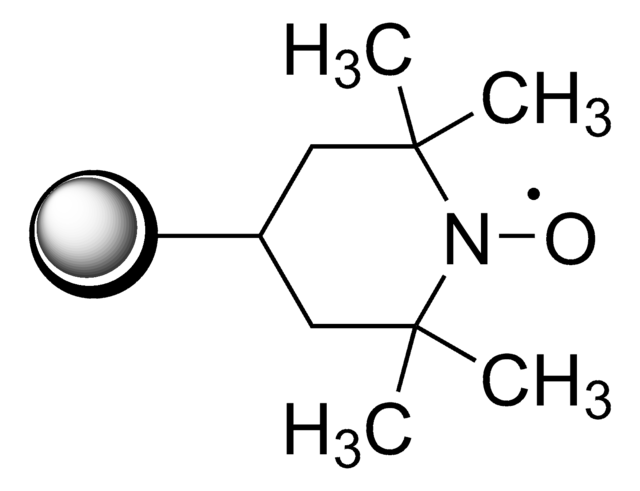810610P
Avanti
4-palmitamido-TEMPO
N-tempoyl palmitamide, powder
Synonym(s):
4-Palmitamido-2,2,6,6-tetramethylpiperidine-1-oxyl; 2,2,6,6-Tetramethyl-4-[(1-oxohexadecyl)amino]-1-piperidinyloxy; 2,2,6,6-tetramethyl-4-palmitamidopiperidinooxy; 2,2,6,6-Tetramethylpalmitoylamidopiperidine-1-oxyl; 4-(Palmitylimino)-2,2,6,6-tetramethyl-1
About This Item
Recommended Products
Assay
>99% (TLC)
form
powder
packaging
pkg of 1 × 1 mg (810610P-1mg)
manufacturer/tradename
Avanti Research™ - A Croda Brand 810610P
lipid type
ESR probes
shipped in
dry ice
storage temp.
−20°C
General description
Application
- to enrich rod outer segment (ROS) membranes
- as a spin probe in vesicles/bilayer to prepare samples for electron spin resonance (ESR) experiments
- as a component in liposomes to assess the mobility of lipid headgroups
Packaging
Legal Information
Storage Class Code
11 - Combustible Solids
Choose from one of the most recent versions:
Certificates of Analysis (COA)
Sorry, we don't have COAs for this product available online at this time.
If you need assistance, please contact Customer Support.
Already Own This Product?
Find documentation for the products that you have recently purchased in the Document Library.
Our team of scientists has experience in all areas of research including Life Science, Material Science, Chemical Synthesis, Chromatography, Analytical and many others.
Contact Technical Service